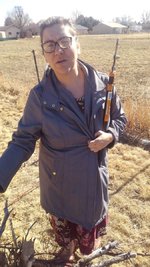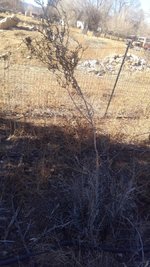ShadyStump
Imperial Masterpiece
The previous owner of our new home planted dozens of junipers and a couple pines of various varieties (still working on identifications) around the field as a privacy wall. Some are rather spindly and leggy, and have been beat up and stunted by weather, placement, competing trees and wildlife, so I plan to dig a few of those in coming weeks or a month or so (we'll see what the weather does) before my wife gets happy with a chainsaw.
I've spaded around them already to cut back any long surface roots, but I'm wondering if I can cut them back some, or shape them at all now. The two on my mind right now each have one tall trunk with a few tufts of foliage on the end- literati style- but shorter fuller branches near the base with no shortage of interest. Both have reverted to juvenile foliage, and I'm not certain what that means for health.
So, should/could I take the long trunks off and/or shape them now while still in the ground to get a month's head start, or be more cautious and wait a year until they've recovered from potting? No shortage of other trees if they don't make it, just not as much potential.
I've spaded around them already to cut back any long surface roots, but I'm wondering if I can cut them back some, or shape them at all now. The two on my mind right now each have one tall trunk with a few tufts of foliage on the end- literati style- but shorter fuller branches near the base with no shortage of interest. Both have reverted to juvenile foliage, and I'm not certain what that means for health.
So, should/could I take the long trunks off and/or shape them now while still in the ground to get a month's head start, or be more cautious and wait a year until they've recovered from potting? No shortage of other trees if they don't make it, just not as much potential.





